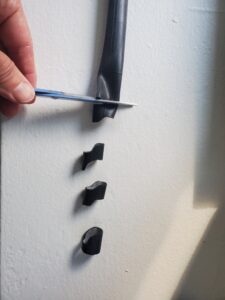The Definitive Guide to Prevent Losing A Wedding Ring While Open Water Swimming
Cold, even cool, open water temperatures can shrink fingers. Here's how to keep your rings safely in place.
Date: October 30, 2022
I had the pool to myself on a deeply cold February day in Chicago. Though the pool area felt balmy and the pool water temperature was a regulation 79°F (26°C), my circulation in those first minutes of swimming was still under the influence of outdoor conditions and the cold bike ride getting to the pool.
.
In one of the first few lengths, an enthusiastic overarm recovery led to my wedding ring catapulting skyward, landing with a modest splash a few yards/meters ahead. Seeing this, I was able to track the ring on its wobbly descent, and easily recover it from the pool floor. In open water, the ring would have been a donation to Poseidon.
.
Open water swimmers know that a cold swim leads to warmer blood abandoning the extremities to protect vital organs, as part of the phenomenon of Cold Induced Vasodilation. Enough time in cold air does the same. Shrinking fingers counts as one of the a lesser hazards from this phenomenon, though one that I had noticed in other winter indoor pool swims and in cold open water swims, as my wedding ring wobbled more. Even on a warm day, with open water temperatures in the mid-60’s F (16-18F), the effect was noticeable. I experimented with stashing the ring somewhere “safe” until back on dry land. But handling the ring twice in every swim has its own hazards, as did recovery from so-called safe place while simultaneously handling a jumble of other gear. For me, the best practical and philosophical answer is to keep the ring on at all times.
.
The answer came in the form of the single most useful of too-often-discarded items: the used bicycle inntertube. Cutting a thin band of the tube and pulling over the ring easily keep it in place. This was the item to stash in a safe place, in all swim gear (in the same zip-lock bag as my ear plugs).
.
It’s not hard to choose or size the tube to avoid constricting blood flow once you learn your ideal size. A 25mm tube is too tight for me, and 28mm is too loose, but the 25mm can be cut to fit a little larger:

Cut perpendicular to the wall of the tube (rather than diagonally) as shown to avoid creating “V” that will hasten the tearing of the band.

In my case, placing the band over the ring or beyond it easily keeps it in place, even in the longest coldest swims.

Not a cyclist, or did your bike tires not anticipate the sizing needed for this swimming project? Drop by your local bike shop, they’ll probably give you your choice of their discards.
